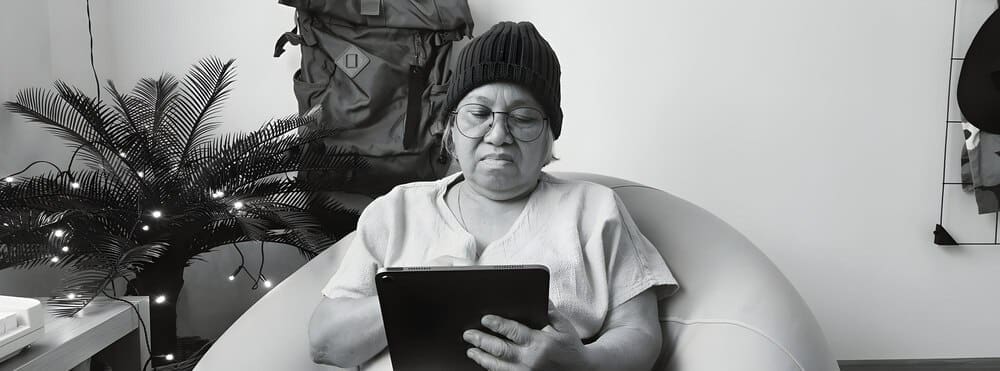A digital detox is a conscious, voluntary period where an individual steps away from technology like smartphones, computers, and social media to reconnect with the world offline. For a growing number of people feeling overwhelmed by constant pings, notifications, and the pressure to be “always on,” this practice has become a critical tool for improving mental health, reducing anxiety and burnout, and reclaiming a sense of presence and focus. The core purpose is not to reject technology permanently, but to reset one’s relationship with it, moving from a state of reactive distraction to one of intentional use.
The Science of Digital Overload
To understand the need for a detox, we must first understand how our devices affect our brains. Modern digital platforms are engineered to capture and hold our attention, often by tapping into the brain’s fundamental reward system. Every like, share, and notification can trigger a small release of dopamine, a neurotransmitter associated with pleasure and reward, creating a compelling feedback loop that keeps us coming back for more.
This process is often compared to a slot machine, providing intermittent, variable rewards that are highly addictive. Over time, our brains can become conditioned to seek these small, frequent digital rewards, making it difficult to focus on slower, more demanding tasks in the real world that don’t offer the same instant gratification. This constant “context switching” between digital alerts and real-life tasks can fragment our attention, leading to what experts call “shallow work” and a persistent feeling of being busy but unproductive.
Beyond the attention economy, social media platforms in particular can fuel negative psychological states. The phenomenon of social comparison—where we evaluate our own lives based on the curated, often idealized highlight reels of others—is strongly linked to increased feelings of envy, low self-esteem, and depression. This is compounded by the “Fear of Missing Out,” or FOMO, a pervasive anxiety that something more exciting or interesting is always happening elsewhere, which can drive compulsive checking of social feeds.
Physically, excessive screen time disrupts our natural sleep-wake cycles. The blue light emitted from screens suppresses the production of melatonin, the hormone that signals to our body that it’s time to sleep. Using devices late at night can lead to difficulty falling asleep, poorer sleep quality, and next-day fatigue, creating a vicious cycle where we feel too tired to engage in restorative activities and turn back to our screens for easy stimulation.
Do You Need a Digital Detox? Recognizing the Signs
The line between healthy use and dependency can be blurry. However, there are several tell-tale signs that your relationship with technology may be negatively impacting your well-being. Recognizing these red flags is the first step toward making a change.
Psychological and Emotional Indicators
One of the most common signs is a feeling of anxiety or stress when you are separated from your phone, or when you don’t have an internet connection. You might find yourself mindlessly reaching for your phone and opening apps without any specific purpose, only to realize you’ve lost significant time to scrolling. Other indicators include feeling irritable or impatient when you can’t immediately check a notification, or experiencing envy and inadequacy after spending time on social media.
Behavioral and Physical Symptoms
Noticeable changes in your behavior can also signal a problem. Are you neglecting hobbies or in-person social interactions in favor of screen time? Do you bring your phone to the dinner table or check it compulsively during conversations with loved ones? Many people report experiencing “phantom vibrations,” the sensation of your phone buzzing in your pocket when it isn’t. Disrupted sleep patterns, frequent headaches, and eye strain are also common physical manifestations of digital overload.
How to Plan and Execute a Successful Digital Detox
A successful digital detox is not about deprivation; it’s about intentionality. The goal is to create space for other things. A well-planned detox is far more likely to be a positive, restorative experience than a spontaneous, unstructured one.
Step 1: Define Your “Why” and Set Clear Rules
Before you begin, ask yourself what you hope to gain. Do you want to be more present with your family? Improve your sleep? Reconnect with a hobby? Having a clear “why” will serve as your motivation when the urge to check your phone arises. Next, define your rules. A detox can range from a “low-tech” evening to a full “no-screen” weekend. Be specific: Does “no screens” include television? What about e-readers? Will you allow phone calls for emergencies?
Step 2: Start Small with a Mini-Detox
If a full weekend offline feels too daunting, start with smaller, more manageable steps. This helps build the mental muscle for longer periods of disconnection. Try implementing “tech-free zones” or “tech-free times.” For example, make the bedroom or the dinner table a screen-free zone. Another popular strategy is to not use your phone for the first hour after waking up and the last hour before going to bed. These small windows of time can have a profound impact on your focus and sleep quality.
Step 3: Prepare Your Environment and Inform Others
Set yourself up for success by reducing temptation. Turn off all non-essential notifications on your phone and computer. Consider temporarily deleting the apps that you find most addictive, such as social media or news apps. It’s also courteous and practical to let friends, family, and colleagues know that you will be offline for a specific period. A simple text message or an out-of-office email reply can manage expectations and prevent unnecessary worry.
Step 4: Fill the Void with Analog Activities
One of the biggest challenges of a digital detox is boredom. We often use our devices to fill every spare moment. To counter this, you must proactively plan alternative activities. Make a list of things you enjoy or have wanted to do but “never have time for.” This could include reading a physical book, going for a hike, visiting a museum, cooking a new recipe, journaling, or meeting a friend for coffee. Having a plan for how you will spend your time is the single most important factor in a successful detox.
Life After the Detox: Reintegrating Technology Mindfully
The true benefit of a digital detox is realized after it ends. The goal isn’t to live without technology forever, but to re-enter the digital world on your own terms. The period of disconnection provides the clarity needed to build a healthier, more sustainable relationship with your devices moving forward.
Curate Your Digital Space
As you reintroduce apps and platforms, be a ruthless curator. Unfollow social media accounts that make you feel anxious, envious, or inadequate. Mute or leave group chats that are noisy and unproductive. Unsubscribe from email newsletters you never read. Your digital environment should serve and uplift you, not drain your energy.
Establish New, Lasting Boundaries
Take the lessons from your detox and turn them into permanent rules. Continue with tech-free zones like the bedroom. Use your phone’s built-in wellness tools (like Screen Time on iOS or Digital Wellbeing on Android) to set daily time limits for specific apps. Instead of reacting to every notification, schedule specific times during the day to check email and social media. This puts you in control, allowing you to engage with technology as a tool rather than being controlled by it.
From FOMO to JOMO
Perhaps the most profound shift is a change in mindset. A successful detox can help you move from a “Fear of Missing Out” (FOMO) to a “Joy of Missing Out” (JOMO). This is the liberating realization that by choosing to miss out on the endless stream of online chatter, you are actively choosing to be present for your own life. You are gaining time for deep thought, meaningful connection, and restorative rest—things far more valuable than any social media feed can offer.
In our hyper-connected world, the ability to intentionally disconnect is no longer a luxury; it is a vital skill for mental and emotional well-being. A digital detox serves as a powerful reset button, allowing us to quiet the external noise and listen to our own needs. It reminds us that our attention is our most valuable resource, and empowers us to reclaim it, one screen-free moment at a time.












